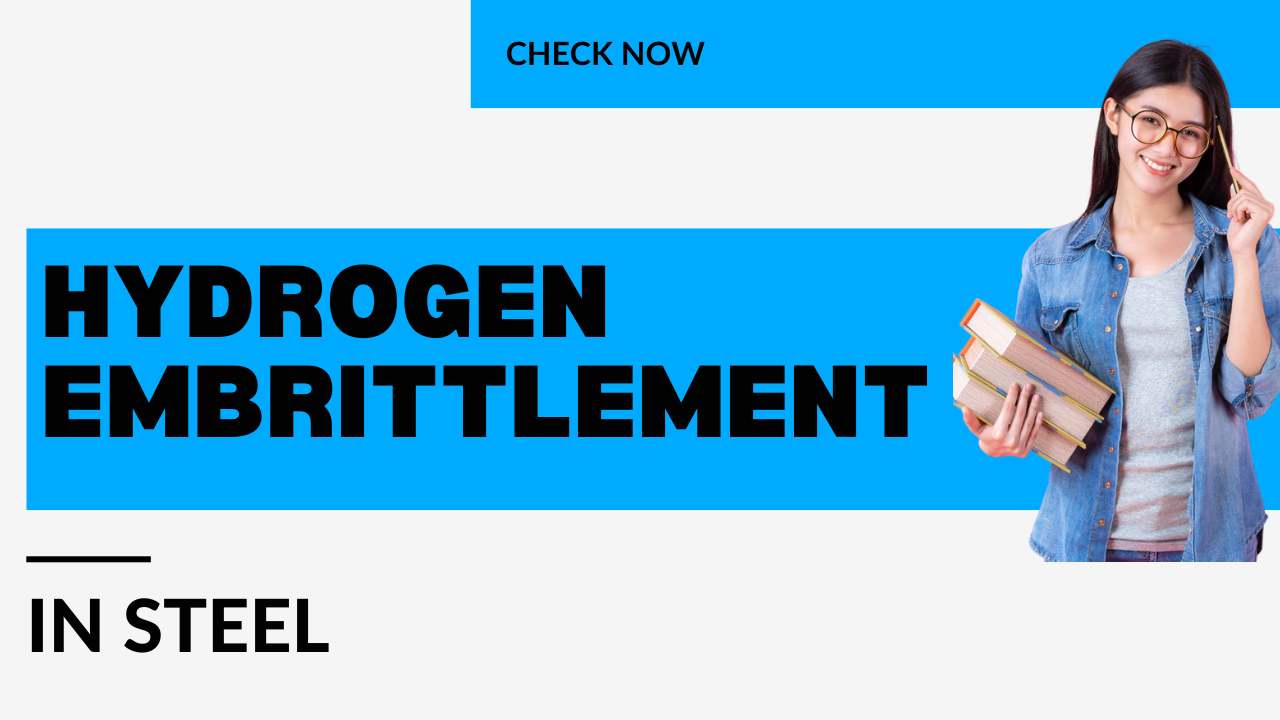Introduction
Steel, a cornerstone of modern construction and manufacturing, possesses remarkable strength and versatility. However, beneath its robust exterior lies a potential vulnerability: hydrogen embrittlement. In this comprehensive guide, we delve deep into the phenomenon of hydrogen embrittlement in steel, uncovering its intricacies, causes, consequences, and mitigation strategies. Whether you’re a materials engineer, a metallurgist, or simply curious about the science behind materials failure, this article will provide valuable insights and knowledge.
Table of Contents
Hydrogen Embrittlement in Steel: An Overview
Hydrogen embrittlement in steel, often referred to as HE, is a complex phenomenon that leads to reduced ductility and fracture toughness in steel materials. It occurs when hydrogen atoms diffuse into the steel’s lattice structure, weakening the metallic bonds and causing the material to become brittle and prone to cracking. This issue poses significant challenges across industries, from aerospace to oil and gas, where steel components are subject to high stress and harsh environments.
Don’t miss the Complete Course on Piping Engineering: Check Now
By EPCLand.com
The Science Behind Hydrogen Embrittlement
At its core, hydrogen embrittlement involves the interaction between hydrogen atoms and the crystalline lattice of steel. The hydrogen atoms diffuse into the lattice during processes such as electroplating, pickling, or exposure to hydrogen-containing environments. Once inside, hydrogen atoms can form hydrides, creating internal stress and weakening the metal’s cohesion. The result is a material more susceptible to cracking, even under stress levels well below its usual breaking point.
Causes of Hydrogen Embrittlement
The causes of hydrogen embrittlement are multifaceted, often involving a combination of factors. The most common sources of hydrogen in steel include corrosion reactions, exposure to hydrogen gas, and hydrogen released during chemical processes. For instance, during the corrosion process, water molecules can dissociate into hydrogen and oxygen ions, with hydrogen atoms subsequently diffusing into the steel. Similarly, exposure to hydrogen-rich environments, such as those found in certain industrial processes, can lead to hydrogen uptake.
Effects of Hydrogen Embrittlement
Hydrogen embrittlement can have profound effects on steel materials. These effects can include:
- Reduced Ductility: Steel’s ability to deform plastically before fracturing is compromised, leading to a more brittle behavior.
- Decreased Toughness: The steel’s ability to absorb energy and resist fracture is diminished, making it more susceptible to sudden failures.
- Delayed Cracking: Hydrogen-induced cracks may not become evident until the material is under stress, potentially causing unexpected failures.
- Intergranular Cracking: Hydrogen embrittlement often causes cracks to form along grain boundaries, further weakening the material.
Mitigation Strategies: How to Prevent Hydrogen Embrittlement
To combat the challenges posed by hydrogen embrittlement, several preventive measures can be employed:
- Material Selection: Opt for steel alloys less susceptible to hydrogen embrittlement.
- Hydrogen Bake-Out: Subject components to high-temperature treatments to drive out absorbed hydrogen.
- Coatings and Platings: Apply protective coatings to reduce the likelihood of hydrogen absorption.
- Stress Reduction: Minimize residual stresses during manufacturing processes.
- Avoid Hydrogen-Rich Environments: Limit exposure to environments with high hydrogen concentrations.
FAQs
Q: What industries are most affected by hydrogen embrittlement?
Steel is widely used in industries such as aerospace, oil and gas, automotive, and construction, all of which can be impacted by hydrogen embrittlement.
Q: How can hydrogen embrittlement be detected?
Hydrogen embrittlement is often detected through various testing methods, including hardness testing, delayed failure analysis, and fractography.
Q: Are all steel types equally susceptible to hydrogen embrittlement?
No, certain steel alloys are more resistant to hydrogen embrittlement than others due to differences in their microstructures and chemical compositions.
Q: Can hydrogen embrittlement be completely eliminated?
While complete elimination is challenging, the risk of hydrogen embrittlement can be significantly reduced through careful material selection and preventive measures.
Q: What role does temperature play in hydrogen embrittlement?
Temperature plays a crucial role, as higher temperatures can accelerate the diffusion of hydrogen into steel, increasing the potential for embrittlement.
Q: Are there any regulations or standards addressing hydrogen embrittlement?
Yes, various industry standards and guidelines outline practices to prevent and mitigate hydrogen embrittlement in different applications.
Conclusion
In conclusion, hydrogen embrittlement in steel is a captivating yet challenging topic that underscores the delicate balance between material strength and vulnerability. By understanding the underlying science, causes, effects, and preventive measures, engineers, metallurgists, and industry professionals can navigate this metallurgical obstacle with greater confidence. As steel continues to play a pivotal role in modern infrastructure, addressing hydrogen embrittlement becomes paramount to ensuring the safety and longevity of critical components.
Recommended courses (Published on EPCLand):
- Basics of Piping Engineering
- Piping Layout Engineering
- Piping Material Engineering
- Piping Stress Analysis
- Complete Course on Piping Engineering
- Material Requisitions
- Piping Material Specifications
- Valve Material Specifications
Related Video
Attempt Quiz
Question 1:
What is hydrogen embrittlement in steel?
Explanation: Hydrogen embrittlement is a form of degradation in steel where the absorption of hydrogen leads to reduced ductility and increased susceptibility to brittle fracture.
Question 2:
Which of the following factors can contribute to hydrogen embrittlement?
Explanation: Hydrogen embrittlement can occur when steel is exposed to hydrogen gas during manufacturing, processing, or service. Other factors, such as high-strength steel and low temperatures, can contribute to its occurrence.
Question 3:
How does hydrogen embrittlement affect the mechanical properties of steel?
Explanation: Hydrogen embrittlement reduces the ductility and toughness of steel, making it more susceptible to brittle fracture under stress, even at lower stress levels than normal.
Question 4:
Which type of hydrogen is primarily responsible for causing embrittlement in steel?
Explanation: Atomic hydrogen (H) is primarily responsible for causing hydrogen embrittlement in steel. It diffuses into the steel lattice and can lead to localized weakening of the material.
Question 5:
How can hydrogen embrittlement in steel be mitigated or prevented?
Explanation: Hydrogen embrittlement can be mitigated or prevented by minimizing exposure to hydrogen sources, using materials with improved resistance, and applying appropriate heat treatment processes to remove trapped hydrogen.



